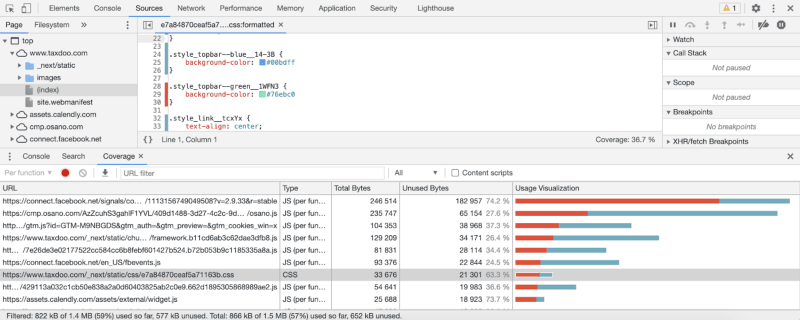
We’ve all been there; a new project drops onto your team’s plate and it’s a scramble to hit the deadline. What usually gets hit hardest? CSS styling. Short deadlines, sub-standard architecture or lacking guidelines means that often CSS becomes the problem child in terms of delivering clean code.
At Taxdoo, we use a range of styling methods for our frontend projects, however a prime example of CSS styling can be seen in our website. Like many company’s websites, Taxdoo.com is the digital shop door for the thousands of customers who visit our site daily.
An inhouse-built site made with React, we are constantly looking for ways to optimise the performance, aesthetics and functionality of our key marketing tool.
What is clean code?
Epitomised by software expert Robert Cecil Martin’s (otherwise known as Uncle Bob) book, Clean Code: A Handbook of Agile Software Craftmanship, clean code refers to agile principles of software development that aim to create code that is simple to understand or change. Dead code refers to code that is not used when an application is run.
What is clean code for CSS?
In CSS, short for Cascading Style Sheets, is the way that property values are applied to the content as a hierarchy. Child elements can either inherit or override properties values from the parent elements. If this hierarchy is not properly adhered to or the team uses bad practices, it can seriously affect a website’s performance. That’s why it is important to optimize and try to keep the CSS clean.
Over time, while we add more features or just small modifications to HTML elements, the CSS can grow quickly and it becomes a challenge to maintain, especially if you don’t stick to the YAGNI principle (“You aren’t gonna need it”, only code the functionality that it is needed) in mind.
Eventually, you need to delete unused CSS or optimize it.
CSS frameworks can take a project load to 140KB of CSS or more, which is a lot and can take a long time to render. This size is also possible when you have a lot of templates and pages, and if you aren’t using all of it, having tools to reduce size and delete dead code is totally worth it.
Why is it good to remove dead code?
Dead CSS will affect the rendering time of your website. Using Lighthouse provides a good overview of potential savings you could make in load-time by removing dead CSS, as well as scoring your website on other categories such as SEO, Performance, Accessibility and Best Practices.
How do we detect dead code?
One of the tools that we like to use is Coverage from Google Chrome. To open this feature from Chrome, you need to open the Developer tools and click coverage in the 3 dots at the bottom left.

There we will see a list of JS/CSS files with bars in red and blue color. The red color means the amount of code unused and the blue color is used. It also shows the percentage of unused Bytes. Whenever you click one of those elements from the list, it will open that file and you can check which part is not being used because it will show a red bar next to it.
This is only visible for the page you are in, when you visit more pages or do more actions in the page this will get updated. Seeing a lot of red doesn’t really mean you should delete it. It could be used in another part of the website, so do not take this chance to delete them because you could end up with big styling problems. To know if a CSS selector is not being used you need to check every single page or state of your site and execute all javascript.
This tool is useful to get an idea if a piece of CSS is being used, for example, if we have a specific component, we visit that component and see how much unused CSS we have.
Other ways to detect dead CSS
To analyse your code and find unused CSS, you can use several automated tools:
PurifyCSS and PurgeCSS are the most frequently used ones and they can be integrated in the build process, while UnusedCSS is a website that checks and gives you a report of your CSS usage.
To avoid having unused CSS, make sure that you scope your components and maintain a good structure. It is difficult to have unused CSS with smaller components since if the component is removed, so is the component’s CSS. However, if you end up with a bigger project or your components grow a lot, it’s worth regularly checking your CSS and trying to clean it.
What do you use to detect or remove dead code?